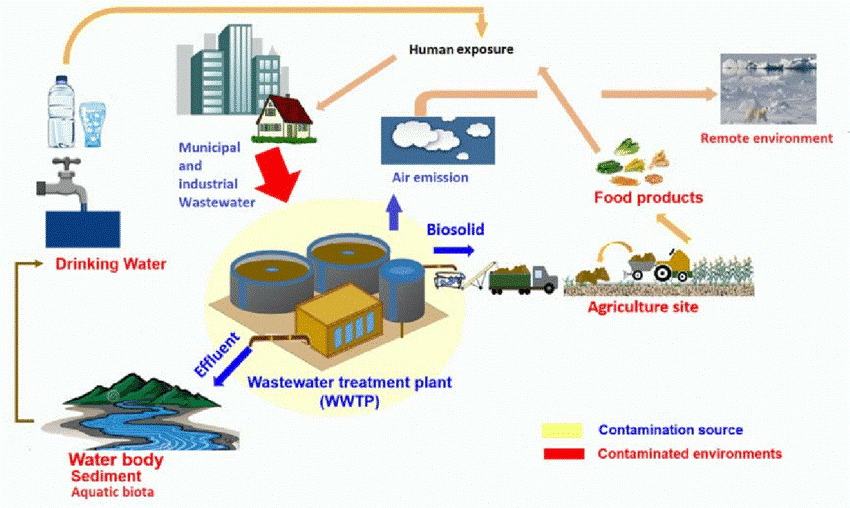The Solutions of M270 Waste Management for Environmental Cleanup
Advanced Approaches for Reliable PFAS Contamination Elimination
The consistent obstacle of PFAS contamination requires the expedition of advanced removal techniques that can effectively deal with these unsafe substances. Cutting-edge technologies, such as sophisticated oxidation procedures and various adsorption strategies, have emerged as appealing remedies in mitigating PFAS from impacted environments.
Comprehending PFAS Features
Although per- and polyfluoroalkyl materials (PFAS) have actually been widely made use of in various industrial and consumer products because of their special residential or commercial properties, their persistence in the atmosphere presents substantial challenges to public health and wellness and safety and security. PFAS are a group of synthetic chemicals defined by a carbon-fluorine bond, among the toughest chemical bonds known, which contributes to their outstanding security and resistance to degradation. This stability permits PFAS to collect in the atmosphere and living microorganisms, bring about prospective unfavorable health results.
These same homes add to their ecological perseverance, as PFAS do not conveniently break down through natural processes. Comprehending the chemical buildings of PFAS is important for establishing efficient approaches to take care of and minimize their ecological impact.
Cutting-edge Removal Technologies
The perseverance of PFAS in the setting has actually stimulated the growth of cutting-edge removal modern technologies focused on successfully getting rid of these pollutants from impacted environments. Amongst one of the most appealing techniques are sophisticated oxidation processes (AOPs), which utilize effective oxidants to damage down PFAS substances right into less dangerous materials. AOPs can be customized to target details PFAS structures, enhancing their efficacy.
Another emerging technology is the use of adsorption media, such as triggered carbon and ion exchange resins, which can uniquely capture PFAS from polluted water. These products have actually shown significant elimination performances, although periodic replacement and regeneration are necessary to maintain performance.
Membrane layer purification methods, consisting of reverse osmosis and nanofiltration, are also obtaining grip in PFAS removal. These approaches can effectively separate PFAS from water, giving a sensible service for treating contaminated sources. Additionally, thermal treatment approaches, such as incineration, can decompose PFAS right into non-toxic by-products, though they call for mindful management to manage discharges.
Jointly, these ingenious remediation innovations represent considerable innovations in the continuous fight against PFAS contamination, providing different techniques to bring back damaged atmospheres and protect public health.

Bioremediation Techniques
Bioremediation methods provide an appealing strategy to attending to PFAS contamination by utilizing the natural abilities of microbes to break down these consistent compounds (m270 waste management). This approach entails using bacteria, fungi, and other microorganisms that can metabolize or transform PFAS compounds into much less damaging byproducts
Current advancements in molecular biology and ecological microbiology have boosted our understanding of microbial neighborhoods and their possible functions in PFAS degradation. more tips here Scientists are actively discovering certain strains of microorganisms, such as Pseudomonas and Bacillus, which have actually demonstrated the capacity to break down particular PFAS substances.
In situ bioremediation techniques, where bacteria are stimulated directly in contaminated environments, can be particularly effective. This method typically includes the application of nutrients or electron contributors to advertise microbial growth and task. In addition, ex-spouse situ approaches, such as bioreactors, permit controlled problems that can optimize deterioration rates.
Despite the assurance of bioremediation, difficulties remain, consisting of the intricate nature of PFAS substances and the need for comprehensive field testing - m270 waste management. Proceeded r & d will be vital to fine-tune these strategies and analyze their effectiveness in diverse ecological contexts
Adsorption and Filtering Approaches
Dealing with PFAS contamination often includes employing adsorption and filtering methods, which are made to get rid of these consistent chemicals from water and soil. Among the numerous strategies, turned on carbon adsorption is commonly utilized because of its high surface and porosity, making it possible for efficient capturing of PFAS molecules. Granular triggered carbon (GAC) systems are especially favored for dealing with big quantities of contaminated water, while powdered turned on carbon (POLITICAL ACTION COMMITTEE) can be used for smaller-scale applications.
Ion exchange materials likewise reveal guarantee in PFAS removal, functioning by exchanging PFAS ions with much less harmful ions in the water. This technique has actually demonstrated performance in concentrating PFAS substances, facilitating their succeeding removal. Additionally, membrane purification techniques, such as reverse osmosis and nanofiltration, run by utilizing semi-permeable membranes to separate PFAS from water, efficiently decreasing their concentrations.
While these methods work, they must be meticulously chosen based on the details PFAS compounds existing and the environmental context. Continual innovations in materials science and design are resulting in useful reference the development of unique adsorbents and filtering systems that boost elimination efficiencies and lower operational costs, therefore enhancing overall remediation efforts.
Regulatory and Policy Factors To Consider
How can efficient regulatory structures enhance the monitoring of PFAS contamination? Comprehensive plans are vital to guarantee a worked with and robust action to the challenges postured by per- and polyfluoroalkyl compounds (PFAS) Regulations can develop clear standards for monitoring, reporting, and remediating PFAS-contaminated websites, fostering liability among markets and public entities. (m270 waste management)

On top of that, monetary motivations and gives can be incorporated right into plans to encourage the adoption of sophisticated remediation modern technologies. Policymakers ought to also prioritize r & d, making sure that arising methods for PFAS why not try these out elimination are verified and implemented properly.
Moreover, public recognition and involvement are vital components of any type of regulative technique, equipping communities to support for their health and security. Inevitably, a well-structured governing environment will certainly not only improve the monitoring of PFAS contamination but likewise advertise lasting techniques that safeguard future generations.
Verdict
In recap, the complexity of PFAS contamination necessitates the fostering of advanced removal methods. Proceeded research and growth in this field remain critical to resolving the difficulties posed by PFAS contamination.